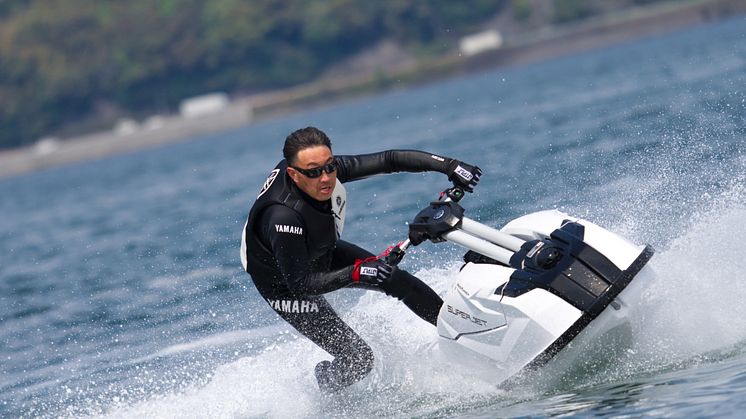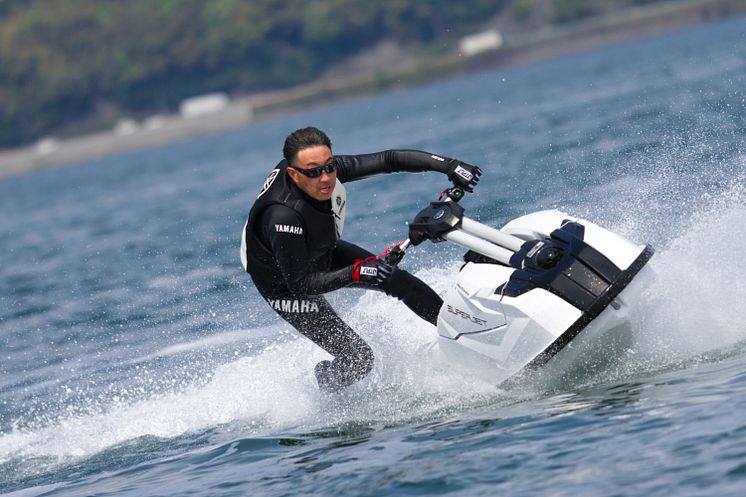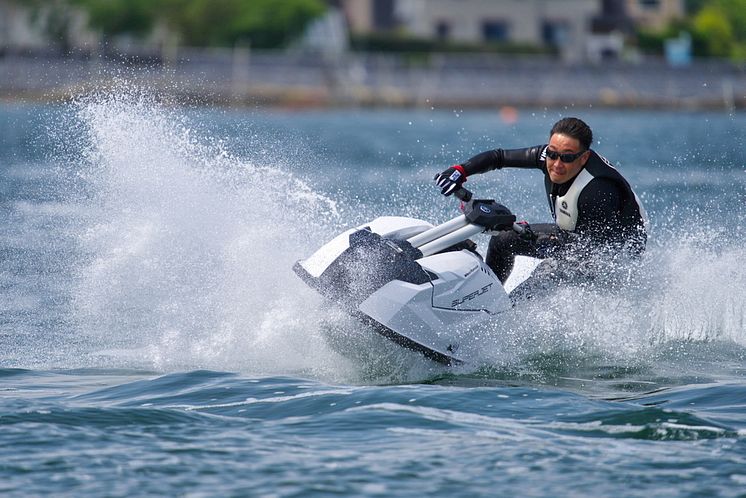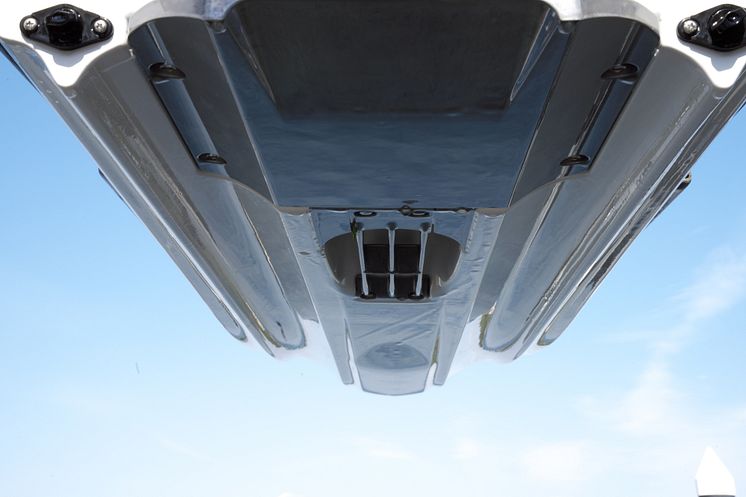
News -
The First All-New SuperJet in 30 Years Yamaha Motor Newsletter (July 7, 2021 No. 89)
The SuperJet is Yamaha’s brand-new stand-up personal watercraft (PWC), and while these watercraft retain a strong core following for the fun they provide once mastered, stand-up PWCs in general do not comprise a large proportion of the market’s overall demand. Driven by the firm belief that such a uniquely Yamaha model should never disappear from the WaveRunner lineup, the SuperJet was redesigned from the ground up for the first time in three decades. For this issue, we spoke with those that led its product planning and development to hear their thoughts and hopes for this new generation of the iconic SuperJet.
Wholehearted Encouragement from the WaveRunner Family

Product planner Chihiro Matsumoto (left) and engineer Masaru Suzuki (center)
The all-new 4-stroke SuperJet stand-up PWC was released in Europe, North America and Japan in 2020, marking the first full redesign of the model in 30 years. This latest iteration carries on not just the performance and handling characteristics the SuperJet name has won over its lifetime, but also the fun that comes with mastery of its capabilities.
While stand-up models remain popular among enthusiasts, the SuperJet accounts for just a small portion of the roughly 50,000 WaveRunner units shipped to destinations around the world each year. In Japan, for example, the market for stand-up models is so small that only about 100 units are sold each year. “Despite all that, many former employees that were involved with WaveRunner development and sales as well as current ones told us that the lineup must never lose its stand-up model,” says the SuperJet’s product planner, Chihiro Matsumoto, from the Planning Section of Marine Business Operations at Yamaha Motor.

The SuperJet received a full redesign for the first time in 30 years.
“Before beginning development, we listened intently to current enthusiasts, particularly in Europe where the SuperJet enjoys a passionate following. From the feedback we gathered, we understood that we had a tall order to retain the 2-stroke’s friendly usability and fun even with a larger, heavier 4-stroke engine,” explains Matsumoto. Other market demands that emerged in the process included keeping the hull as small as possible and compact enough to fit into a minivan.
A Unique Kind of Fun that Grows with User Proficiency

The highly original concave underbelly design enables
the SuperJet’s cornering ability and the fun that accompanies it.
The development staff, on the other hand, struggled with the requirement put forward by the product planners to keep the SuperJet small enough to fit in a minivan.
“We were already working on developing a stand-up model before the SuperJet project began in earnest,” explains Masaru Suzuki from the Marine Business Operations’ WV Development Section. “We built several prototypes and ran repeated tests to build a really fun product that we would be satisfied with.” Getting the hull down to an acceptable size entailed numerous challenges and is a point of pride for the engineer. “Making the engine’s airbox smaller and optimizing the exhaust layout was how we managed to put together a well-balanced hull design that still fit within the size requirements.”
Despite many clashes between the product planning and engineering teams during the development process, they were overcome through their shared belief that such a fun watercraft should never disappear from Yamaha’s lineup.
“Beginners tend to think that stand-up models are hard to ride, but in fact, they provide a type of fun similar to snowboards and skis,” says Suzuki. “It’s hard at first, but once you learn to control it and become able to ride how you want, the feeling you get when you carve a beautiful turn is awesome.”
Coming 30 years after the first SuperJet 650 was released, the all-new 4-stroke SuperJet’s small size makes it easy to transport and it inherits its predecessor’s unique fun that grows with proficiency. This new generation of Yamaha’s stand-up watercraft is ready to win over marine recreation enthusiasts the world over.
The New Yamaha SuperJet
Built with the Pride of Japan
|
Message from the Editor As Suzuki-san mentioned, people new to stand-up PWCs—and the SuperJet, by extension—often say how difficult it is at first. But, once users get a taste of how much fun it can be with practice, the SuperJet is said to keep you wanting to ride it more and more to further improve your skills. The feeling of unity between the rider and machine the SuperJet delivers was carefully refined over its 30-year lifetime not just by generations of Yamaha engineers, but also the many customers that were drawn to and shared the experience. Maiko Kawai |





